Creating the Foodloose ‘Silk Road’ between the West and the East
As early as two thousand years ago, camels and traders made the epic trek on what is now known as the Silk Road, announcing their presence through the ringing of bells attached to their caravans that echoed across continents. From China to Europe, these caravans carried silk, tea, ceramics, and other valuables for thousands of miles, and brought home spices, novel inventions, and religious trinkets, creating a trading network between Europe and Asia. While the Silk Road became a trading route of unique historical significance, it also provided the opportunity for the cross-pollination of cultures and ideas between the East and West early in human development.
The Silk Road impacted the evolution of human culture in countless ways, and among them was the cultural exchange of different foods and cuisines. Early on in human civilization, cultures maintained their own culinary traditions by passing them on to future generations through oral communication. Therefore, one might expect each culture to have built its own unique repertoire of recipes, exclusive to its own corner of the world. However, the opposite is true. Often, we find similar foods in various cultures, even if these cultures exist on different sides of the world. This can be attributed to the development of economic relationships between segregated cultures, maintained by developing diplomatic techniques such as cultural exchanges, chief among them the Silk Road trade route (in Eurasia in particular). Nowadays, this exchange of culture, from food to religion, is accelerated exponentially due to the implementation of modern technology, and global cuisines have become both more diverse and integrated.
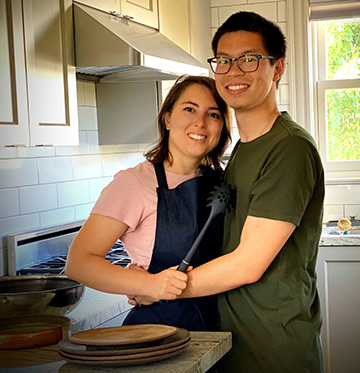
Elisa and Ben Lai are a perfect personification of this history of cultural exchange. They are a young couple from Italian and Chinese ancestry, respectively, and their passion has been in the creation of traditional foods from both of these cultures, influenced heavily by the other. Some of their recipes have been passed through their families for generations, but this couple has dedicated their livelihoods to incorporating some of the best qualities of each culture′s food as seamlessly as possible. They have created and perfected timeless new recipes, such as their Swirled Linguine with Sea Urchin, Vegetarian Pad Thai with Brown Rice Noodles, Seared Kampachi Sashimi, and Squid Ink Mafalde with Cherry Tomatoes. These are just a handful of some of the delicious and healthy dishes they share on their website. With such an innovative spirit, this couple has transformed traditional recipes into wonderfully diverse and healthy variations, for the global citizen. Their website reads as a modern representation of the Silk Road, bringing together the far west and the far east.
We recently caught up with Elisa and Ben to learn about their cooking philosophy and advice for aspiring culinarians. We hope you enjoy reading the following interview:

Q: You have a fascinating website featuring many delicious dishes. Please share with us what led you to build such an informative website.
A: My husband and I decided to build the website due to our passion for food around the world. We are both from countries and regions that are rich in food culture. I am from Italy and he is from Australia but has a Chinese background. Both of us really love cooking and experimenting with new recipes, which meld the best practices, ingredients and techniques from our cultural background. He does most of the food photography and editing due to his creative skills, while I do most of the cooking and recipe development. The website allows us to showcase and share a new take on home-cooking fusion cuisine, made and prepared by a mixed-race couple.
We are also trying to build our website out to incorporate the food exploration and discovery we encounter during our travels and holidays, as well as restaurant reviews in the future. Watch this space…
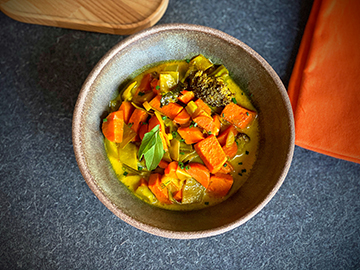
Q: What would you like to accomplish with your website?
A: We want to be able to share our knowledge of food between our different cultures – which can blend into something unique and new. Recipes on our website is our main ′bread-and-butter′. We seek to provide the best quality content and images to our audience so that they can try at home or seek inspiration. We also want to share our story in each of our recipes, each of them has brief background on how we came up with the idea. I have complications with my diet (dairy and pork intolerance) and prefer gluten-free for food. These limitations can bring new workarounds to traditional methods and ingredients, allowing both of us to generate ideas of substitutes that can be used based on our knowledge of both our food experience and cultures.
In the same theme of exploration, we also want to share food experiences we have across the world, ideally attracting audiences that also love traveling and trying new types of food, or for those who have not to travel to those locations and are inspired by the types of cuisine and food offered around the world, to inspire them to try unique flavors that they had not thought of before. Our restaurant experimentation is more domestic and local, seeking out the best food (not necessarily expensive) aesthetically and taste-wise that people who visit San Francisco (for now) that they can try.
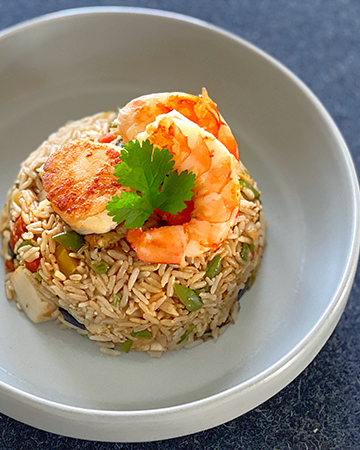
Q: What are the process and primary goals when building your recipes?
A: Italian cuisine has some of the most amazing and diverse foods that is known worldwide, and so does Asian cuisine. However, both of these cuisines are very traditional in its thinking and preparation, but we want to break that barrier and show the world that by blending the best of both worlds, there can be a new way to approach tastes, and bring the West and East together…through food. Our recipes are inspired from the taste and flavors we have experienced in our different situations and our cultures. We put our unique twists to these recipes, that can be dietary (gluten-free, dairy-free, no pork etc.), based on what is fresh at the time or sharing unique cooking techniques and experiences. It′s about enhancing traditional recipes (and coming up with new ones) based on our current tastes and finding a balance in flavors and consistencies. Ultimately, we want to showcase our best experimental recipes to the world, but it doesn′t mean we can′t also show some recipe experiments that taste just as good.
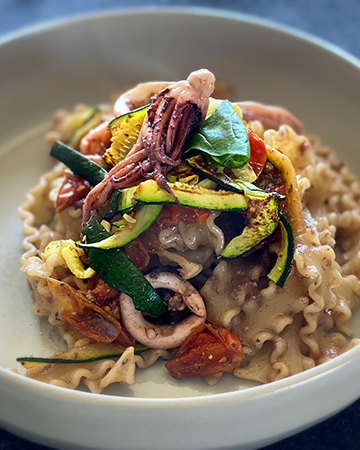
Q: Which areas do you like to focus on the most (e.g., nutrition, taste, appearance)?
A: We would focus on all 3 for our readers, but if we had to pick, it all starts with nutrition. This is because I was diagnosed with a life-threatening disease when I was younger, and despite the suffering endured through traditional medicine, I was able to self-heal through a food-based approach. Our bodies are like engines, and if we don′t service it with top quality oils (i.e. food) it could break down and lead to problems in the future. We make sure all ingredients are healthy, fresh and organic and we try to find a combination that brings out the taste of the food. The ingredients all have to compliment and taste good; healthy food doesn′t need to taste bad or bland, it should be enjoyed! Lastly, it also needs to look good on a plate, otherwise how else do you get people to try it?
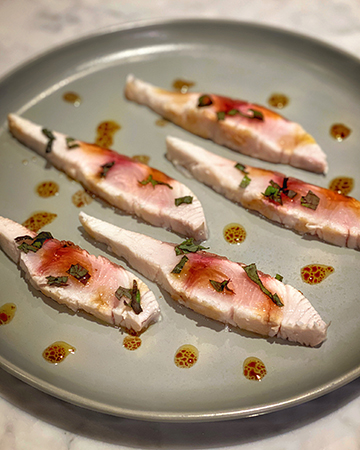
Q: Please share with us some cooking tips when it comes to preparing seafood.
A: Some tips to abide by:
– Never overcook fresh fish – it′s better to have fish slightly undercooked than to be overly cooked. Otherwise it loses the taste and consistency, and becomes dry and chewy
– Do not overpower seafood with lots of sauce and seasoning – Seasoning is meant to bring out the flavor, not overpower it. Fish and seafood are more delicate than poultry or other meats, you don′t need to over season if you enjoy the seafood.
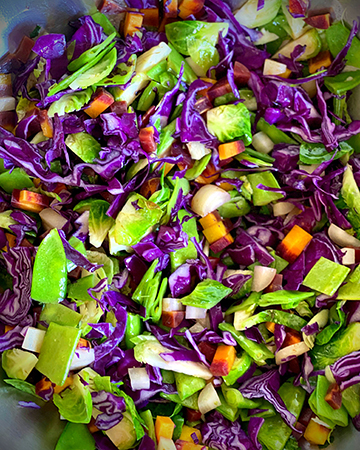
Q: Where do you purchase your ingredients? Do you create your own sauces?
A: We buy our raw ingredients from different producers and grocery stores, which are organically and ethically farmed. Everything is created from scratch, from the sauces to our own tortillas.
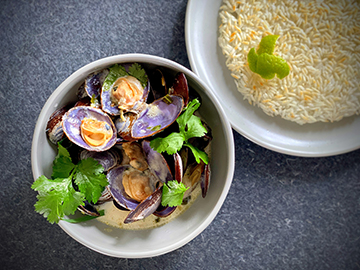
Q: What are the benefits of combining Asian and Italian cooking?
A: The benefits are that you′re combining two very rich food cultures together, with a lot of variety in cooking methods, ingredients and textures. By collaborating together our food experiences and heritage allows us to try to bring the best of both worlds. Sometimes it can be as simple as combining spices, garnish and sauces with a traditional Italian recipe to elevate the dish.
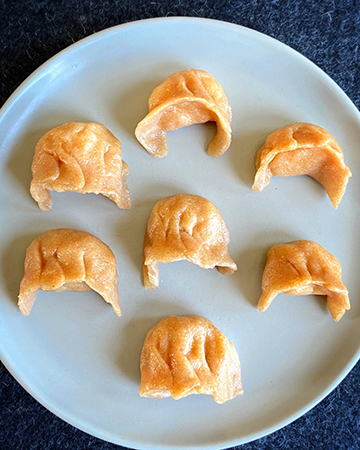
Q: The cultural exchange between Italy and Asia can be dated to the era of Marco Polo or beyond. I recently discovered that a popular Chinese pasta called Cats′ Ears (貓耳朵) is very similar to Orecchiette (meaning ″ear″), a pasta from the southern region of Italy. Are there other examples like this in which both cultures share similar dishes?
A: Yes, there are many. Sharing food has been a common way to share and communicate different cultural traditions since countries could explore. Food was also a way for people to come together, form relationships and bond. This is a powerful and positive example of the relations that Europe has with Asia, along with the Silk Road.
Other examples where both cultures share similar dishes are Rice and Risotto, a variation of grains but very similar cooking methods of having the grain absorb chicken stock to enhance the flavors. Spaghetti/Tagliolini/Tagliatelle and also different types of noodles that share similarities with Asian ramen/rice/flat/egg noodles, and ravioli being a variation of the Asian dumplings. There are slight variations in ingredients but a majority of the making process is very similar.
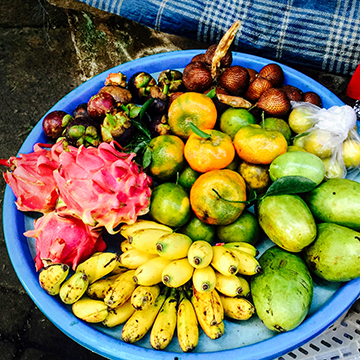
Q: You also like to do food traveling. Please share with us some of your findings while traveling.
A: Some of the most interesting foods and flavors in our food travels are from SouthEast Asia. The mixture of exotic herbs, spices and vegetables that are rarely found anywhere else (Mangosteen, Thai Chili, Dragon Fruit etc.) that make their flavor and texture unique. This allows all sorts of recipes to be derived that cannot be replicated elsewhere. It′s all about finding the unique food experiences and tips/tricks/traditions and cooking techniques in the place that we are in. We plan our search for ′must-trys′ months in advance to ensure we experience the best local restaurants and cuisine.
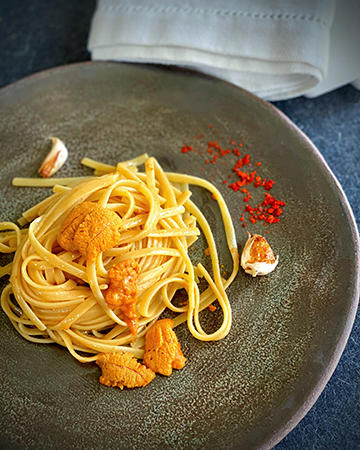
Q: Please recommend some of your favorite dishes to our readers and why you recommend them.
A: Sometimes the simplest dishes are the best. Easy to make and extremely tasty. It all comes down to having great ingredients and some basic techniques, you don′t need overly complicated dishes to enjoy food. Our favorite dishes are the Spaghetti with Sea Urchin and Pad Thai 2.0, both contain an Italian and Asian component.
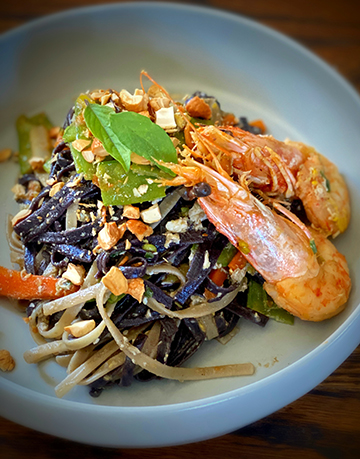
Q: Do you have any future plans that you would like to share with our readers?
A: Our future plan is to eventually go back and visit north Japan (Hokkaido), and try the traditional food over there. We are in love with Japanese food, as they take a large amount of care and precision in not just their cooking techniques but also their presentation in even some of their most basic dishes. They do not stray away from tradition though, and this is where we hope to incorporate some of our experiences and bring it back to our recipes. Malaysia and Singapore are also two places we are looking to visit, especially with Singapore being a melting pot of cuisines from Indonesia, Malaysia, Chinese, Vietnamese, India, amongst other Asian countries.
We hope you enjoy reading Elisa and Ben′s take on fusing the West and East cultures in their food recipes. We are looking forward to more of their new dishes and food ideas.
Elisa and Ben′s links:
Instagram: @foodloose_blog (www.instagram.com/foodloose_blog)
Blog: www.foodloose.io
Feedfeed: www.thefeedfeed.com/foodloose_blog